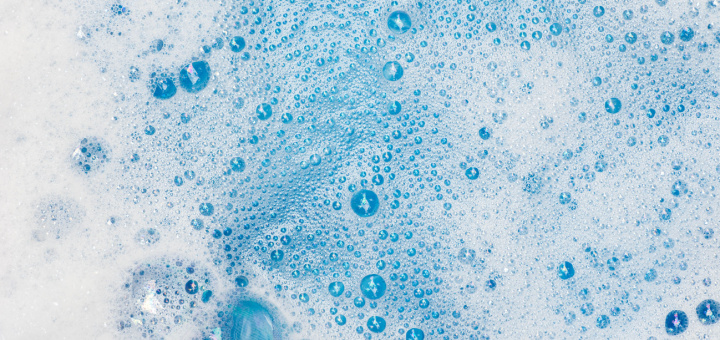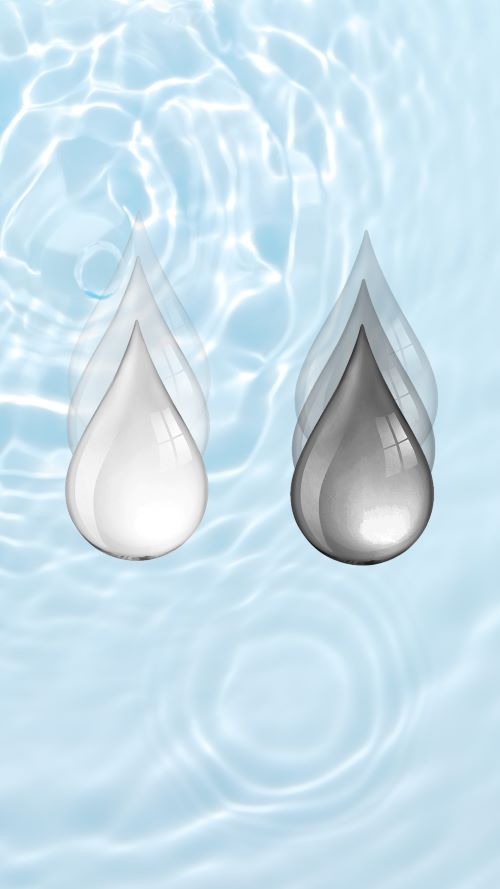
Water from onboard sinks, washers and showers is called graywater. Because boats are not connected to a permanent sanitary sewer system, graywater is discharged directly into the water without treatment. Graywater may contain nutrients such as phosphate and toxins including chlorine, inorganic salts and metals that can cause excessive unwanted algae and vegetation growth, decreases the dissolved oxygen in the water due to the decomposition of organic matter and contributes to a decline in water quality and the aquatic ecosystem. The discharge of graywater is prohibited in some harbors and marinas. Check with marina personnel for local restrictions.
Minimize Graywater Discharge
- Use shore-side facilities - showers, sinks, laundry.
- If not available, save showers, laundry, and dishwashing for home.
- If possible, install holding tanks for graywater.
- Use water saving devices such as low-pressure showerheads to conserve water.
- Use more "elbow grease" and as little cleaning product as possible.
- Use only biodegradable, non-phosphate, and less toxic laundry detergents, soaps, drain openers, cleaners etc.
- Research your products before you buy them. Choose less toxic cleaning products, such as non-phosphate, biodegradable cleaners.
- Look for products with official green certifications such as Environmental Protection Agency Safer Choice or Green Seal.
- Try to skip the boat wash. Unless you need to rinse the salt water, wiping the boat down with a damp cloth will suffice.
- Use tarps or canvas boat covers to keep boat clean between trips and reduce the amount of cleaning you need to do.
- Conserve water and use water saving devices such as low volume showerheads.
Do You Know the Difference Between Graywater and Black water?

- Black water or sewage, is wastewater from toilets, containing human waste.
- Graywater is the soapy water from sinks, showers, bathtubs, dishwashers, and laundry facilities.
Composition
Black water
- Contains harmful pathogens including bacteria, viruses, and parasites that can spread diseases.
- Impacts levels of nutrients in the water. Black water takes oxygen to decompose sewage in water. The amount of dissolved oxygen in the water required to decompose organic matter is measured in terms of “Biological Oxygen Demand” or “BOD”. Although the volume of waste from a boater is small, it is concentrated, which increases BOD. High BODs are often found in marinas and poorly flushed areas. Excess phosphorus and nitrogen from sewage can also contribute to harmful algae blooms (HABs), which block sunlight penetration and also contribute to lower oxygen levels. High BODs and HABs make it difficult for fish and other aquatic life to survive.
Graywater
- As mentioned above, graywater may contain nutrients, some toxins such as chlorine, and other substances like soaps and detergents.
Environmental Impacts
Discharge of both gray and black water can be detrimental to aquatic ecosystems. In addition to harming aquatic life and possibly endangering human health through tainted seafood or swimming places, black water can cause toxic algal blooms and lower oxygen levels. Although gray water may not be as dangerous as black water, it can still contribute to nutrient contamination, which can cause algae bloom and disturb the ecology.
Regulations: Because black water discharge has the potential to negatively impact both human health and the environment, it is severely regulated in many places. For instance, It is against federal and state law to discharge untreated sewage anywhere within the three-mile territorial limit (including lakes, rivers, reservoirs or coastal water within three miles offshore) or even treated sewage into any designated No Discharge Zone. Learn more on this web page regarding 'What You Need to Know About Boat Sewage'.
Certain regions, especially those with delicate ecosystems, have laws that forbid the dumping of gray water. Check with marina personnel for local restrictions.
